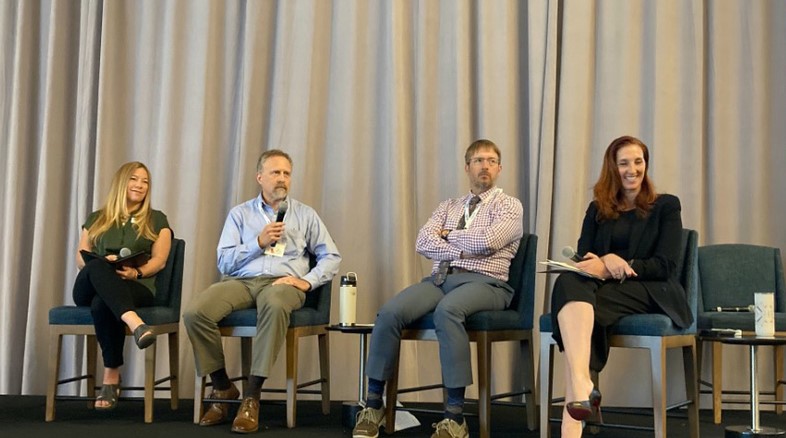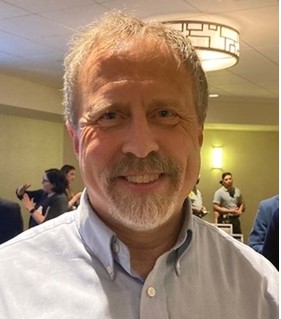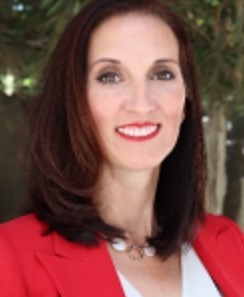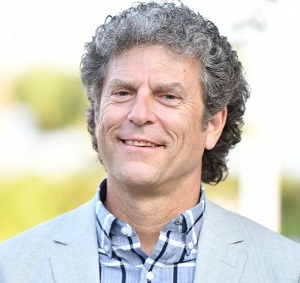Plastics in focus as EPR rules heat up
main text
Plastics in focus as EPR rules heat up

Steve Toloken
Oregon Department of Environmental Quality’s David Allaway (at mic) and CalRecycle Director ReRachel Machi Wagoner (far right) on a panel at the Product Stewardship Institute conference, with other officials.
Portland, Ore. — Plastics and its recycling challenges will be getting a lot of attention as states start the long process of implementing their new extended producer responsibility packaging laws.
That came through clearly at a recent conference of state environmental officials, where leaders from the four U.S. states that have passed legislation mandating EPR for packaging — California, Colorado, Maine and Oregon — outlined how they'll meet strict targets for plastics.
California may be the most ambitious. Its EPR law, passed in mid-2022, has a goal of reducing single-use plastics sold in the state by 25 percent by 2032, from a 2023 baseline.
"The big picture around passage of this legislation is an intention to decrease the amount of plastic overall being sold into the state which is, I think, pretty groundbreaking source reduction," said Rachel Machi Wagoner, executive director of CalRecycle, the state agency charged with implementing the law, known as Senate Bill 54.
SB 54 requires that 65 percent of all single-use plastics sold into the state be recycled or composted by 2032.
And, unique among the four states, it will set up a fund to clean up legacy plastic pollution. Starting in 2027, companies will pay $5 billion over 10 years, with $1.5 billion of that from plastics materials makers.
Detailed rules now being written in all four states will spell out industry responsibilities.
Generally, they'll ask companies using and supplying packaging to pay more to build infrastructure, ensure viable end markets and take on a larger role managing recycling.
Wagoner and other state officials, industry representatives and environmental groups spoke at the 2023 U.S. Product Stewardship Forum, held Sept. 11-14 in Portland. It was organized by the Product Stewardship Institute.

Allaway
Tough PE film recycling targets
In Oregon, the debate over those detailed EPR implementation plans includes pointed conversations about how to handle difficult-to-recycle plastics.
The state's draft rules, for example, do not include PET thermoforms on a list what would be accepted for curbside recycling, but industry groups like The Recycling Partnership say it should, to encourage investments.
As well, Oregon's draft rules have proposed a 28 percent recycling rate target for PE film within five years, but industry noted that the current national recycling rate for PE films is only 1.8 percent.
The Circular Action Alliance, an industry-funded group administering part of Colorado's EPR program, told Oregon officials their goals is "unattainable" and instead suggested 10 percent by 2028.
At the conference, Oregon officials said they became interested in a packaging EPR law after China's 2018 "National Sword" waste ban exposed problems in the state's 1980s-era recycling programs, said David Allaway, senior policy analyst with the Oregon Department of Environmental Quality.
"The genesis of our EPR for packaging came out of National Sword," he said. "Recycling markets on the West Coast were very significantly disrupted when we lost access to our primary end markets.
"While we weathered that storm, it demonstrated a lot of other deficiencies in our state's recycling policy framework, which had been established in the 1980s, at a time when there was no commingling, there were very few plastics, there were almost no exports and there were very few MRFs [material recovery facilities] to speak of," Allaway said.
As a result, he said the state's EPR law is a broad rewrite of recycling programs, imposing new requirements on both local governments and companies.
Companies, for example, will have to work together within what are called Producer Responsibility Organizations, and it tasks the PROs with some plastics goals.
Oregon's PRO will have to work toward a plastics packaging and foodservice items recycling goal of 25 percent by 2028 and 50 percent by 2040.
"The PROs also have some direct operational obligations, including achieving progressively increasing statewide plastic recycling goals," he said, as well as operating supplemental collection infrastructure for products that "are recyclable but not appropriate for the commingled [curbside] system, such as plastic expanded polystyrene."
Hard-to-recycle plastics
Others at the conference saw opportunities in EPR programs to make progress on hard-to-recycle plastics, in part by building on states passing EPR for packaging with voluntary efforts in the places that aren't.
"The changes in the plastics and packaging area in the last five years have been so dramatic," said Leslie Hushka, managing director of North American operations for German EPR program operator Green Dot.
"I think what we see as a game changer is this simultaneous conversation about how you stand up mandatory programs as well as some side-by-side initiatives, harmonize those and really focus on some of these more difficult to recycle plastics, in particular films, flexibles, pouches, snack bags and toothpaste tubes, some of the ones that states will struggle with," she said.
Hushka predicted that a national EPR packaging law in the United States is unlikely, with a patchwork of state laws most likely emerging.
The four states that have passed packaging EPR did so in 2021 and 2022, but defying some expectations that others would follow, no new state did so this year.
Some at the conference suggested states may be waiting to see how the implementation goes in the four that passed legislation.
She suggested the U.S. could face a split in the coming decade between states that have moved strongly ahead on packaging EPR, and those that are doing little.
"The U.S. is not going to take the path that Canada has, we will not have a national EPR program as much as some of us strongly advocate that," Hushka said. "We may go the way of EPR for other materials where you get 10, 15 maybe 20 states if you're lucky, and then you've got the rest of the U.S. How as a producer do you manage that situation?"
Arguing that places like her home state of Texas are "not going to pass a bill," Hushka advocated for mixing voluntary efforts nationally with what's happening in states passing laws.
"How can we simultaneously work in states that won't have regulation in place for the next 10 to 15 years?" she said.
One undercurrent of the conference was how Canadian provinces and European countries have generally much more quickly adopted and implemented packaging EPR rules.
To try to work around some of the U.S. shortcomings, officials from the four state governments told the conference they've been meeting to search for common ground as the write their regulations. They held talks the day before the PSI conference, for example.
That move was praised by industry groups at the conference. Shane Buckingham, deputy lead for the Circular Action Alliance, applauded the four states for trying to harmonize their rules as much as they can.
"Our feedback is to say let's try to find a way to get this as standardized as possible," he said.

Wagoner
Questioning recycling
Some of the state officials said they see EPR programs putting more demands on how single-use plastics and packaging are used, including much more detailed tracking of what happens to materials collected for recycling.
Wagoner, for example, said California has recycled 484 billion beverage containers since its bottle bill program started in 1986 but "where those beverage containers went, we never really tracked."
She said state officials are weighing the limits of recycling, pointing to end uses for PET bottles.
"If I've got how many hundreds of millions of PET water bottles that are being sold into the world — and in a mechanical recycling setting, in a best-case scenario, that PET plastic is being recycled four or five times — that's super but it's eventually landing in the landfill anyway," Wagoner said. "How much energy, and how is that energy generated, and how much water did we use to mechanically recycle that PET bottle. And that's our best-case scenario."
She suggested the state wants recycling that keeps materials in use long-term, with an eye toward low overall environmental impacts.
Recycling a PET bottle into a thermoform container and then seeing it go immediately to the landfill may not be the way to go, Wagoner said.
"In our worst-case scenario, where we're collecting a lot of PET water bottles and then downcycling them into flake that turns into a clamshell that winds up in a landfill after one use, we've exerted a lot of money, a lot of energy and fuel and transportation, a lot of water, to what is just a very expensive trip to the landfill," she said.
Wagoner and other states on the panel said they're looking at creating "malice" fees to discourage some material use, as well as credits to encourage others, as part of what's broadly called eco-modulation fees.
Avoiding bag ban mistakes
The EPR laws are encouraging more focus on reusable packaging, and that led to nuanced discussions at the conference around reusables and unintended impacts of California's 2014 plastic bag ban.
Colorado, for example, will be studying the infrastructure needed for reusable packaging, and Oregon is setting up a waste prevention and reuse fund that its government will direct. Allaway said the fund has "the potential to be pretty impactful."
But he also argued that reuse systems must recapture a high percentage of containers to make environmental sense.
"If you're putting these heavy, polished stainless steel tanks out in the market to sell Häagen-Dazs ice cream and 50 percent of them don't get recirculated for reuse, you're doing more environmental harm than good," Allaway said. "It's not just about meeting reuse targets. It's about doing it in a way that meets environmental benefits."
Similarly, Wagoner said regulators and lawmakers need to be wary of unintended consequences, pointing to the state's 2014 plastic bag ban and its 10-cent fee on reusable bags.
"I think California's plastic bag ban is a great example of what not to do," Wagoner said. "We required reusable bags to be sold into the market at 10 cents a pop and all we really did was create an incentive for a lot thicker plastic bags that are only, as data is showing, being used once and end up in landfills."
"So we've just increased the amount of plastic being disposed of in California over the last decade through the single-use plastic bag," she said. "I think all of us are looking at that as an example of what not to do. When we talk about reuse it gets more complicated."
Allaway said reuse systems can have environmental benefits if designed well.
"Reuse, while generally preferable to recycling in the hierarchy, is only preferable in achieving environmental benefits if certain conditions are met," he said. "It's very important that those conditions be met. One of those conditions is a high capture rate."

Cassel
Industry holds back EPR
While industry groups praised the four state governments for trying to harmonize their EPR regulations, some at the conference faulted industry for its disjoined approach.
Scott Cassel, the CEO and founder of the Product Stewardship Institute, told the conference that lack of consensus among companies in the packaging supply chain is holding back building workable EPR regulations in the United States.
"The bottom line is we need, as government, the industry to be unified and to be willing to come to the table and have the discussions," he said. "Here in the United States that's been really difficult and with packaging, it's been nearly impossible."
Cassel, whose group includes governments as a major part of its membership, pointed to the paint industry efforts on EPR, and he noted an agreement PSI reached with the Flexible Packaging Association in 2020 around an EPR framework.
He told the meeting that he had been "sitting down holding my tongue" on some of the panel discussions around the need for states to harmonize their EPR rules.
"What the governments need is industry to be willing to come to the table, that's the main reason we don't have harmonization in the United States," Cassel said. "We're talked a lot about some of the opportunities and we can follow up afterward, but governments do need willing partners."
* Source : https://www.plasticsnews.com/news/extended-producer-responsibility-coming-four-us-states
* Edit : HANDLER
